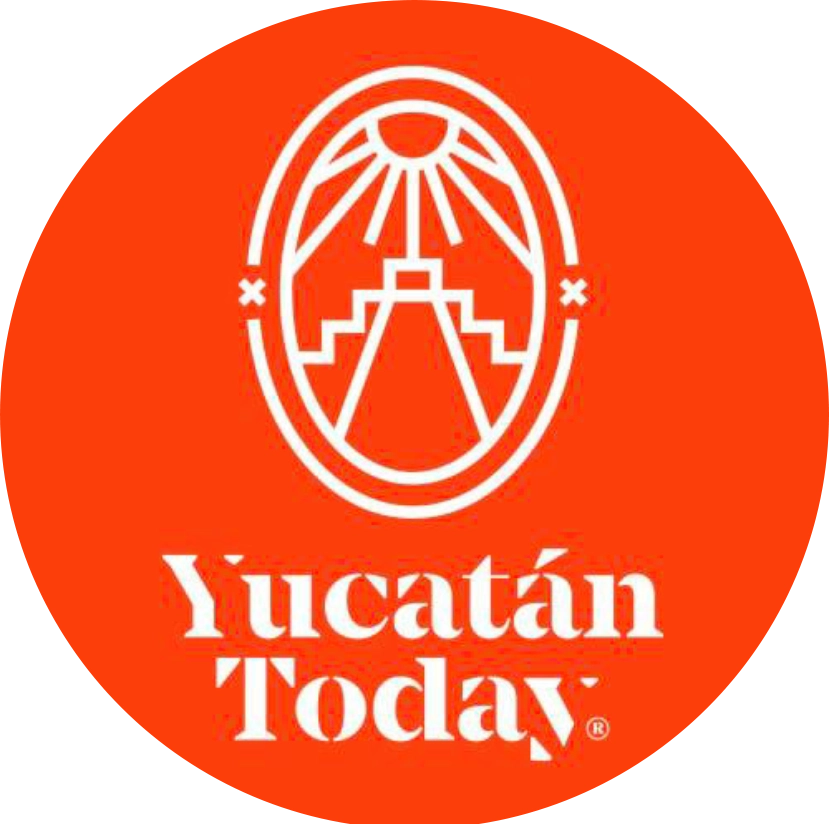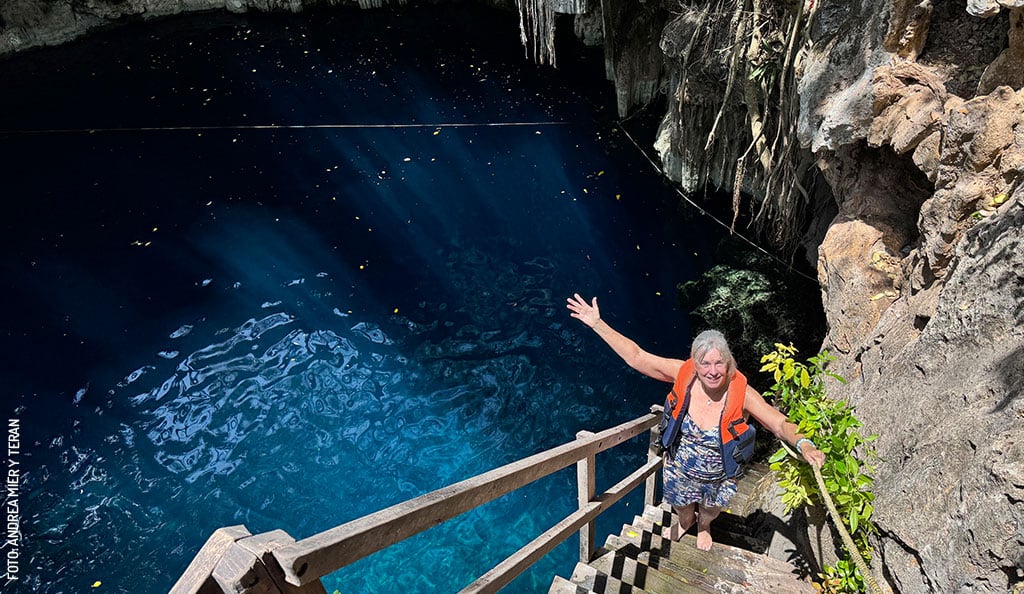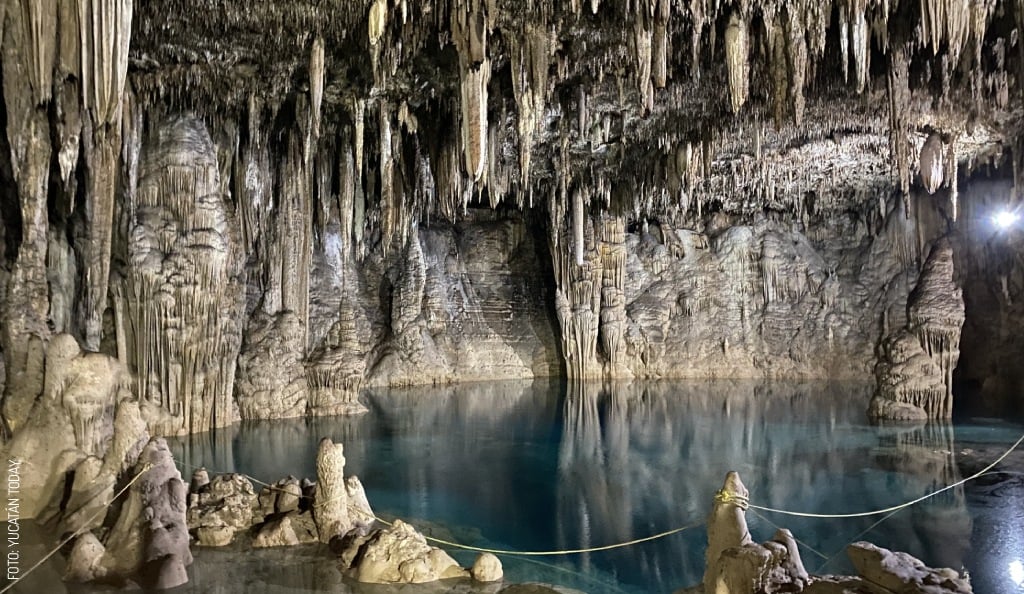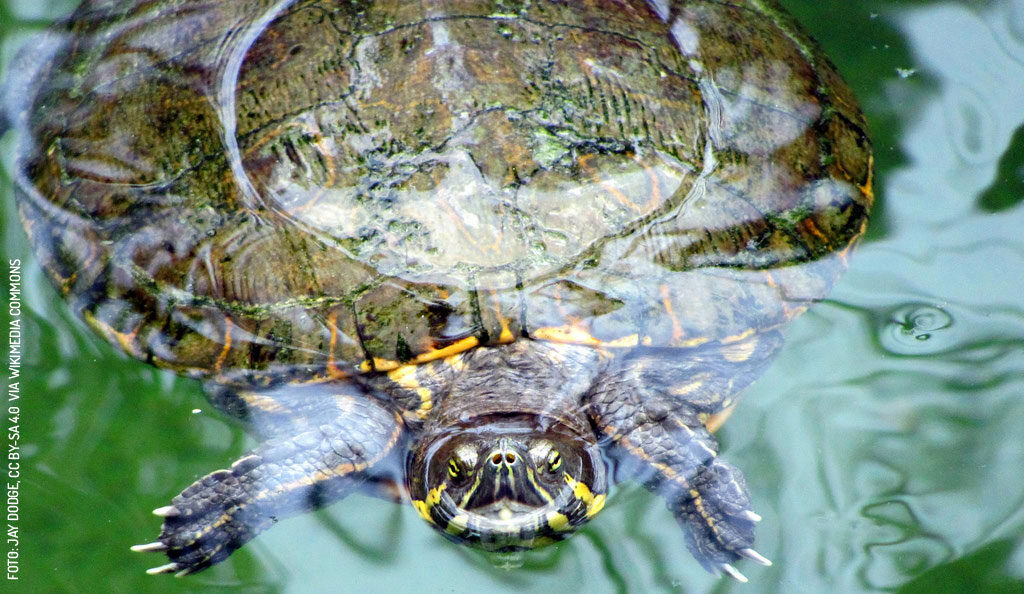

San Ignacio Ik kil
The natural wonders of the state of Yucatán are innumerable and some of the most important and unusual are the cenotes, or sinkholes. It is estimated that there are more than 6000, although only 2400 are registered.
Cenote or Dznot
The Maya called them dzonot, which the conquering Spaniards translated as cenote. Geraldo Díaz Alpuche was a military commander in the 16th century who was greatly impressed with these underground caverns and pools, and he tried to explain the meaning of the word cenote in the Spanish language as meaning "deep thing".
The Motul dictionary, a dictionary of Maya hieroglyphics, defines dzonot as "abysmal and deep". Cenotes are magical, enigmatic and unique in the world and were once the only resource for fresh, sweet water in the local Yucatecan jungle. They were the sacred places of the Maya for that reason, but also because they represented the entrance to the underworld.
Water temperature of cenotes
The Yucatán Peninsula is a porous limestone shelf with no visible rivers; all the fresh water rivers are underground. Being porous, caverns and caves formed where the fresh water collects – hence the cenotes or water sinkholes. The water that gathers in these subterranean cenotes is a crystal clear turquoise color with a very pleasant temperature of 78° F (25.5º C). The stalactites and stalagmites that form inside the cenotes are true natural works of art. In many, holes in the ceiling allow the sunlight to filter into the cenotes, giving the scene a magical feeling. The cenotes of Yucatán are a natural treasure that should be seen by all, keeping in mind that they should be protected so that man does not destroy in a few days what nature took millions of years to create.
Four different types of cenotes
Those that are completely underground, those that are semi-underground, those that are at land level like a lake or pond, like the one at Dzibilchaltún, and those that are open wells, like the one in Chichén Itzá. Some of them are accessible for swimming and cave diving, but this is a sport that should ONLY be practiced with a professional guide.
The Cenotes and the Maya
Arriving by air into Merida, think of the land of cenotes, geological cavities which vary according to their morphology; deposits of crystalline waters with a stunning kaleidoscope of natural light, and also, incidentally, which played a leading role in the development of the Maya culture. Without cenotes, this enigmatic civilization would not have prospered, not to mention the religious significance that they played in their mythology, as the gateways to the underworld. When your plane touches down, only a few meters away from the runway are some of these natural wonders. The cenotes by the airport cannot be visited, as they are not open to the public, but the geography of the Península is full of them. Do not miss the chance to see the cenotes of Yucatán: pure magic!
To understand the reason for their existence, click here. It's all about meteors and dinosaurs!
Here is a list of some of the most accessible cenotes:
Cenotillo
This village gets its name from the large number of cenotes located within the town and the outskirts. According to locals there are more than 150 cenotes, some of which are located in open fields. The main cenotes are Kaipech, Xayin, Xoch, Yook Chac (magnificent, privately owned cenote with caves, its own Maya ruins, and a greater chance to observe wildlife), and Ucil (town cenote). Excellent, knowledgeable guide: Juan Verde, who knows the area very well. Contact him: tel. 9911 107 236 or 9911 063 637, Calle 13 No. 156 x 18 y 20, Cenotillo. Or if in Cenotillo, ask at the main square.
Cenote Chihuán
80 km. from Mérida on the "Libre" road to Cancún, this underground cenote is clean, safe, well lit, and has easy access. Change rooms, parking, regional food, green area, camping and horseback riding.
Cenotes in Cuzamá
There are three cooperative groups managing the cenotes here. The three cenotes Chelentún (turquoise blue water and excellent visibility), Santa Cruz, and Dzapakal are managed by Grupo Organizado Chelentún, at Hacienda Chunkanán, 3 km south of Cuzamá. Cooperativa “X'Tohil” manages the four cenotes San Felipe, Ayuso, Saak-Pakal and X’tohil. Cenotes Chansinic’ché and Bolonchoojol are managed by another group. The means of transport with all three groups is a “truck” (wooden cart pulled by small horses).
Cenote Dzul-Ha
(Caballero del Agua) at the Hacienda Sotuta de Peon. Monday to Sunday: Package includes: Tour in "truck", visit to Casa Maya. Optional: Restaurant service. Info: 941 64 41. www.haciendatour.com
Cenotes in Homún
For the cenotes tour, you can hire a local guide with a mototaxi (maximum 4 passengers, $250 pesos), as the access isn’t easy for cars; check that he has touristic certification. Choose the number of cenotes you want to visit or ask your guide for his recommendation. At each one there is an entry fee of $25 pesos per person, it’s not included in the transportation cost. Located only 50 minutes from Mérida, there are more than 15 cenotes here: Open, closed, some with caverns and caves. There are small hotels and places to camp. From downtown Mérida there are colectivos which depart from Calle 67 x 50 y 52, that take you directly to the main plaza in Homún where there are guides ready to take you to the cenotes. Or you can contact Gabriel, to reserve your experience, including transportation from Mérida if you wish: Cel. 9993 55 5151. Also Jacinto Cel: 9993 52 3570
Cenote Ik Kil
Located in the Eco-archeological Park Ik Kil, just 3 km. from Chichén Itzá and Pisté. Called the "Sacred Blue Cenote," it is a perfectly round well-type cenote with exuberant vegetation and waterfalls. This is another ideal place for swimming in the clear blue water. 196 feet wide and about 130 feet deep, it is an open cenote about 85 feet from the surface. A grand stairway leads you down the steps into the water. Open daily from 8 AM to 6 PM. There is also an excellent buffet style restaurant here and bungalows for overnight stay (contact: tel. (985) 851 0002, Srita. Ana Luisa, from 10 am to 5 pm). www.cenotetickets.com
Cenote Kankixché
(Tree with yellow fruit) At Kankirixche Cenote, you will find a large, spectacular sub-aquatic cavern with crystal clear water that allows fantastic visibility for snorkeling or scuba. In this grand cenote you will also find stalactites and alamo tree roots that form an impressive formation from the ceiling to the water. Kankirixche is a semi-open cenote 33 feet high, 90 feet long and about 75 feet wide.
Los 7 Cenotes
A private reserve of more than 250 hectares. The immense richness of this place offers an exclusive and safe encounter with nature and the mystic Maya world. It is located in the Municipio de Sotuta, 80 km from Mérida. www.los7cenotes.com
Maya Park
Near town of Chemax, 20 minutes east of Valladolid. www.maya-park.com
Cenote San Ignacio
Just 40 minutes from Mérida, on the highway to the neighboring state of Campeche in the village of Chochola, is the cenote San Ignacio. This cenote is a safe place and ideal for swimming in its transparent, turquoise waters. Found inside a cavern, there is artificial lighting and even music! The domed type roof is about 24 feet tall, from which hang incredible stalactites. For your enjoyment and comfort, you will find palapas, bathrooms, showers, dressing rooms, a children’s play area, wading pools, stables, restaurant, and spa. Open 365 days a year. www.cenotesanignacio.com
Cenotes X'Kekén and Samulá
Located in Dzitnup, 7 km. southeast of Valladolid, this cenote is underground with a hole in the ceiling. It is probably one of the most photographed cenotes in Yucatán. Deep, refreshing, crystal clear waters await you and it is a great cenote for swimming. There is lighting and a guide rope to make it easier to enter. Don't forget to buy a picture postcard from the kids at the entrance as taking a picture just never turns out right and you WILL want a picture of this to show the family.
Cenote Xlacah
Cenote Xlacah Located at the Maya site of Dziblichaltún, just north of Mérida, this is the closest to Mérida. Meaning "old village," it is an open ground level cenote, not open for swimming. It is more than 140 feet deep at one end. Open from 8 am to 4 pm. Part of the video mapping "Pasos de Luz" takes place at night time at the cenote.
Cenote Yaxhunah
With the participation of local residents, the beautiful Yaxunah Cenote has recently received new stairs and access to a picnic area. It is located between Chichén Itzá and Yaxcabá, and there is also a Cultural Center and the Yaxunah archaeological site nearby. Facebook: Centro Cultural Comunitario De Yaxunah
Cenote Yokdzonot
A swim in this cenote is a magical experience. Small fish dart all around you, birds are swooping overhead and singing, and dragonflies flutter above the water's surface. The water is cool and clean. Just 10 minutes from Chichén Itzá and some meters away from the cenote, is a Ecohotel & Camping, Yucatan Mayan Retreat, to stay! Open seven days a week, and life jackets can be rented. For those who love the adventurous and exciting exploration, you can get one of their 3 eco tours packages in the Yokdzonot cenote at: www.yucatanmayanretreat.webs.com
Cenote Zaci
Located in the heart of Valladolid, this is a semi-open cenote that has a diameter of 150 feet and is 260 feet deep. This is a popular cenote for swimming in the refreshing turquoise waters. You will see a rare species of eyeless black fish known as "lub." A third of the cenote is covered with stalactites and stalagmites and there is a walkway around the entire cenote. There is also a great restaurant on the property. www.cenotezaci.com
Download the map for:
Read about cenotes:

Author: Yucatán Today
Yucatán Today, la compañera del viajero, es un medio bilingüe de información turística sobre destinos, cultura, gastronomía y el qué hacer en Yucatán con 37 años de trayectoria.
¡Receive the latest articles and much more from the best of Yucatán in your email!
Related articles

A Roundup of Senior-Friendly Spots in Yucatán
Accessible Yucatán for seniors: easy cenotes, hassle-free henequen tour, serene beach, enjoyable honey tasting, and accessible Uxmal.
Treasure Along the Way: Cenotes Choj Ha and Pueblo Fantasma
Discover the hidden treasures of Cenotes Choj Ha and Pueblo Fantasma in Yucatán, Mexico. Dive into pristine natural cenotes and enjoy unique...





